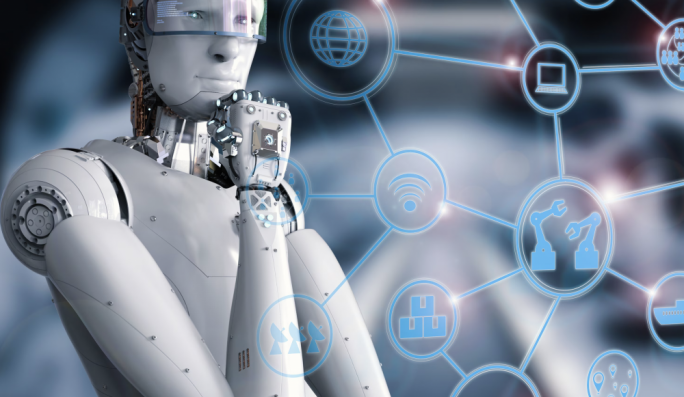
My grandma’s flatmate is a robot
By installing this technology in their private homes, we can guarantee a bright future for our elderly relatives and some restful nights for us knowing that our loved ones are in safe digital hands

It is a known fact that people live longer these days, and most governments are under pressure to provide more institutional care. But such care is very costly, and most of the time, the demand is much higher than the supply, thus leaving vulnerable people without adequate supervision.
Many people are worried because their parents have reached a stage where they cannot live independently, but on the other hand, there’s no space available for the institutional care they can afford. Furthermore, we all know that people prefer to keep living in their community rather than being uprooted and placed in an alien environment.
They need the comfort of their loved ones, the chit-chat with their neighbours and the occasional visit from a friendly face. There have been various longitudinal studies which showed that people who have satisfying relationships are happier, have fewer health problems, and live longer.
But one’s home can also contain deathtraps. A significant risk faced by older people is accidental falls. Studies estimate that about one-third of the elderly living in the community experience at least a fall each year (because of loss of consciousness, seizures, stroke or other conditions), with a 30% of people aged 65 or older experiencing a fall each year.
The loss of consciousness before or after a fall creates a problem wherever a person remains lying down until someone notices the accident or regains consciousness. This situation could lead to further complications if the person involved suffered injuries and cannot move. Thus, calling for help or trying to get up can be critical.
Ambient Assisted Living (AAL) services in the elderly’s homes come to the rescue to solve this issue. These technologies help older people live independently by assisting in the cleaning, providing support and monitoring.
Several devices have been designed and developed, based on sensors, microphones and vision systems with quite promising results. These products include temperature controllers, smartwatches, robots and many others.
They provide elderly or vulnerable people with a better lifestyle within a secure environment.
The wonderful thing about these technologies is that they use non-intrusive cheap sensors which monitor the person’s movement and actions. Standard camera feeds monitored by an AI system are capable of following a person throughout his home. They can perform skeletal detection (an estimation of the person’s skeleton) and through it, infer what the person is doing.
Thus, if the system detects a person lying on the floor during the night, it will first try to interact with him via voice. If the person does not answer back, it will then raise the alarm to his next-of-kin or the relevant authorities.
The entire process is performed automatically by an AI, and there are no humans involved, thus safeguarding the individual’s privacy.
But how would such a system work? First of all, the user would need to install some essential sensors such as cameras, microphones and speakers.
An AI system connects to them, manages the different devices and all the interaction with the user. Let’s imagine for a second the case of an older person called Lucy, who lives independently.
In the morning, the AI wakes her up at the desired time by raising the window blinds and switching on the wifi-enabled kettle. The smell of coffee gently flood her nostrils, and her favourite music starts playing on the nearest speaker.
As Lucy gets out of bed, the AI wishes her a good morning and reminds her to take her pills. The system also sends a text message to her loved ones to inform them that Lucy is awake and well.
As the day progresses, the AI provides lucy with various services such as reading the latest news, remind her about appointments she might have, connect her to her online friends and also suggest a lovely recipe.
Sometimes Lucy gets disoriented since she has mild symptoms of Alzheimer and tries to get out of the house without any help. The system notices such an attempt, tries to grab her attention by calling her while also notifying her loved ones.
Luckily, Lucy calms down and goes back to her usual routine. While she is on the sofa watching her favourite TV program, the system instructs the robotic cleaner to start washing the house.
It then notices that Lucy fell asleep and adjusts the thermostat to keep the place warm. When she wakes up after a long nap, she needs to use the bathroom, but she stumbles and falls on the floor.
The system notices that and speaks to her. Hearing no reply, it immediately informs her loved ones and requests an ambulance. Luckily for Lucy, she did not suffer any serious injury and went back home in no time.
As we’ve just seen, an AAL system has various benefits. It can help the vulnerable in their most mundane tasks and in more serious matters.
In some cases, it can act as a lifesaver by protecting them from the various traps found lying around the house. The cost of entry is not high and pretty much within reach of most people.
Furthermore, one must also consider the costs saved from institutionalising these people and the emotional toll of stripping them from their community. Overall, it is evident that AAL is the most practical approach.
By installing this technology in their private homes, we can guarantee a bright future for our elderly relatives and some restful nights for us knowing that our loved ones are in safe digital hands.



